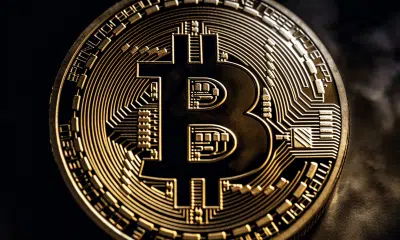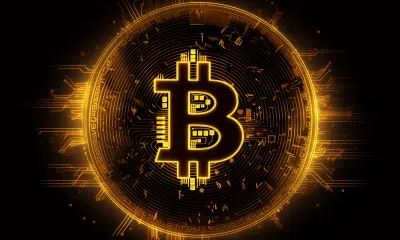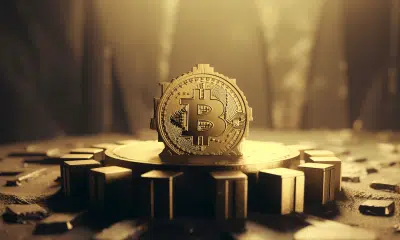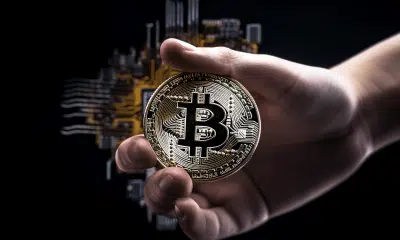Why do people still give a shit about Shitcoins?

Most people are under the impression that there are only two types of cryptocurrencies in the market – Bitcoin and altcoins. This is a categorization based largely on the ‘us v. them’ narrative; however, it does not end there as many go on to sub-categorize altcoins even further – shitcoins and deadcoins.
Deadcoins are easy to understand and define (After all, they’re dead). Shitcoins, however, are a subjective categorization, a classification that is an extension of the ‘us v. them’ narrative, but one that is firmly in the derogatory camp. An example of such language was given recently by John Carvalho who tweeted,
Please stop taking it personally that shitcoins are ignorant and scammy. https://t.co/hN6ekjPIiu
— John Carvalho (@BitcoinErrorLog) May 13, 2020
This is why defining them is tricky. Generally speaking, shitcoins is a pejorative term used to describe those altcoins that have become worthless following a lack of interest, mere speculation-based price movement, or creation in bad faith.
These coins can either be disguised pump and dump schemes or can merely be cryptos that have no development and no utility whatsoever, despite, perhaps, the best efforts of their developers.
For the purpose of this article, however, let’s not look into those projects driven by bad faith. That, alas, might be a slippery slope to take.
However, for all the obvious signs there may be to a shitcoin, there seems to be a tonne of them in the market. Why is that so? Why is there, still, a market for these alts?
Why is there a market for Shitcoins?
It’s May 2020 now and still, many of these cryptos continue to be listed, ranked, made fun of, and to a small extent, used. Yes, used. Shitcoins they may be, but a lot of these sh*tcoins have some trading volume to back them up.
The power of words
Why is that the case? Well, for starters, most of these are pushed into the market under the guise of fancy whitepapers that want to achieve anything and everything under the sun. It’s human tendency, you see, a tendency to fall for words. Words lend a pretense of sophistication.
Alas, what’s interesting is that most of these whitepapers are usually filled with needless and self-indulgent jargon, with some of them being an exercise in paraphrasing other whitepapers.
Hype, propaganda, and total marketing
Let me give you an example. Imagine a brand, new Apple store opens to huge crowds around your street corner. It gave out coupons for purchases, aired radio ads announcing the opening, and even had Jim Parsons cut the ribbon. It has a fancy façade, has flashy lights that keep your pupils dilated, and has Apple geniuses that act as cocky as Indian guys with green cards.
A few days after the grand opening, however, it’s as deserted as the rest of the street corner. Once the initial wave of interest passed, it became just another storefront that’s utilizing way too much electricity.
Now, if the store is lucky, it’ll be able to churn out slow and steady business over the next few years, or it will collapse in a heap as quickly as it launched.
This example perfectly encapsulates the roadmap of a lot of cryptocurrencies today. Once the initial pump and the crypto-community’s attention pass, altcoins can either swim or stay afloat for unknown reasons and become shitcoins.
It should also be noted that more often than not, apart from superficial developments, there aren’t many technical developments to speak of for shitcoins, because of which, there is never an organic foundation for future growth. This is the reason why even the slightest piece of news, good or bad, can have a disproportionately huge effect on the token’s price and community.
Dogecoin surging by almost 15% in 2 days following a comment made by Elon Musk in jest is just one such example.
Are exchanges accessories?
Then there’s the question of exchanges.
Think of the 2017 bull run – a time when the crypto-market first came to mainstream attention. The flood of new market participants saw a rush of new cryptocurrencies and tokens making a splash in the market, a splash aided by the ICO boom.
However, the rush of new cryptocurrencies and tokens also saw many of the market’s top exchanges doing their best to accommodate many of them. In fact, unlike the structured chaos of present-day, the Wild Wild West of pre-2018 didn’t have well-defined listing criteria that have since become industry standard.
And, what was the impact of such listings? Well, it can be argued that it lent credibility to what was still a largely questionable market. Think of this as high school. Sure, you may not know anything about the kid who heads the Math club, but you’ll sure as hell learn about him when he takes the head cheerleader to prom.
Marc Kenigsberg, Founder of CoinJanitor, a project that intends to “restore value by absorbing failed crypto projects, coins, and tokens,” called this an “incestuous relationship,” telling AMBCrypto,
“The fact that there wasn’t a threshold for listing and that marketing would be the primary determinant of trade volume, which directly resulted in profits in those days, led to a lot of coins listing and taking advantage of it. I think the fact that a lot of coins were making money actually led to exchanges being lax on listing requirements. I think it’s a circle that ramped itself up and created this snowball.”
High risk = High reward?
Perhaps, there is a simple explanation as to why there is still a market for shitcoins – Profits. Shitcoins, for many, offer that very opportunity, with the rate of reward much greater than those that might accrue to regular cryptocurrencies like Bitcoin or Ethereum.
“High Risk, High Reward,” these people say. Very well, however, while fortune may favor the brave, it isn’t really smiling gently on the many who hold these shitcoins.
Economics 101
Economics may have something to say about the question at hand too.
Consider the Momentum theory of economics which dictates that rising asset prices will rise further and falling asset prices will keep falling. If applied to the case of shitcoins, that would mean that there would be a huge sell-off as soon as the token started falling, right? Well, not quite, because the theory is predicated on cognitive bias and irrational human behavior, because of which traders still hold onto their shitcoins in hope, despite the fact that the pump may have long passed.
In fact, such trading behavior can also be explained by the Greater Fool theory of economics, a theory that dictates that it is always possible to make a profit on assets, whether or not they are overvalued, at a later date because there is always someone (A greater fool) willing to pay a higher price.
Are too many shitcoins altcoins too pricey?
Over the past few years, every coin that is not Bitcoin has come under a lot of attack from different quarters. However, while many have dissed altcoins for supposedly damaging the crypto-market through dilution, it is also important to recognize how unique and important some of these are, with many of there offering more than just what the king coin offers.
Bitcoin is king. But, it’s a king with its own issues, most notably scalability. And as highlighted, it doesn’t offer everything that some maximalists promise it does either. Just check out Bitcoin’s own evolution over the years. In fact, just count the number of people pitching Bitcoin as a peer-to-peer electronic cash system.
Which is why altcoins are important. How many though? That is a question that no one has an answer to. However, what can be highlighted is the cost of having so many altcoins or shitcoins in the market.
According to Kenigsberg, the primary areas of cost can be divided into three – financial costs, opportunity costs, and psychological risk costs.
While financial costs are measurable on scale in today’s terms, opportunity costs include good development time and good developers and active community supporters voting their energies to a project that isn’t going to gain critical traction and network effect over one that might.
However, according to Kenigsberg, psychological risk costs are potentially the riskiest and often, the most ignored costs. Giving the example of mainstream media picking up the news of scam coins duping people of their money, the CoinJanitor Founder highlighted that the risks associated with such coverage, especially for the appetite of an audience that is largely unaware of the difference between Bitcoin and other cryptos, could be “exponential.”
Perception battles
Then there’s the question of what the effects of a surviving, if not booming, shitcoin market are on the perception of the larger crypto-market.
The cryptocurrency industry has done its best to leave the shadow of the Silk Road behind itself. And while the use of cryptocurrencies on the darknet for some illicit activities continues to hamper its credibility, mainstream institutions and capital are rushing into the crypto-market with every passing day.
What then, is the impact of a surviving shitcoin market? Well, not much. While once the existence and tenacity of such a market would have raised some concerns in mainstream quarters, this isn’t the case anymore. In fact, shitcoins are hardly anyone’s concern anymore, with institutions more worried about other aspects of the cryptocurrency market.
This was a sentiment shared by CoinJanitor’s Kinegsberg, who added,
“The risk isn’t with other altcoins existing; the risk is with other people who are supposed to know what they are talking about suggesting that crypto is about making money. Crypto isn’t about making money. It’s about adoption, it’s about use, it’s about making the world a better place.”
Time for tough decisions
According to statistics from the U.S Department of Labour, the survival rate for small businesses falls to 50% in 5 years and 20% soon after. With respect to investments made by venture capital funds, another study found that 65% of venture capital deals over the course of 10 years returned lower capital than what was put into it.
The cryptocurrency market of 2020 does not yet have the credibility of small businesses, nor does it have the market integration of start-ups and venture capitalist endeavors. But, one day, it’ll get there.
For the market to get there, however, it is essential that there is some major pruning. Recognize what is essential and understand what is non-utility, because otherwise, the costs of too many cryptos in the market may soon be too heavy to bear for even the world’s largest cryptocurrency.






